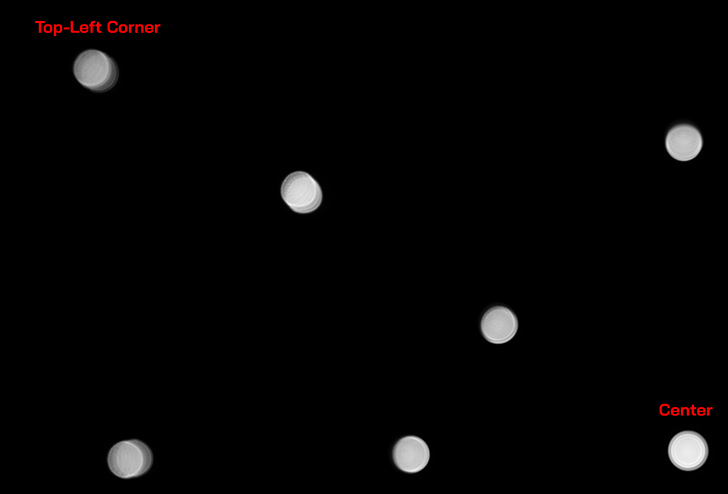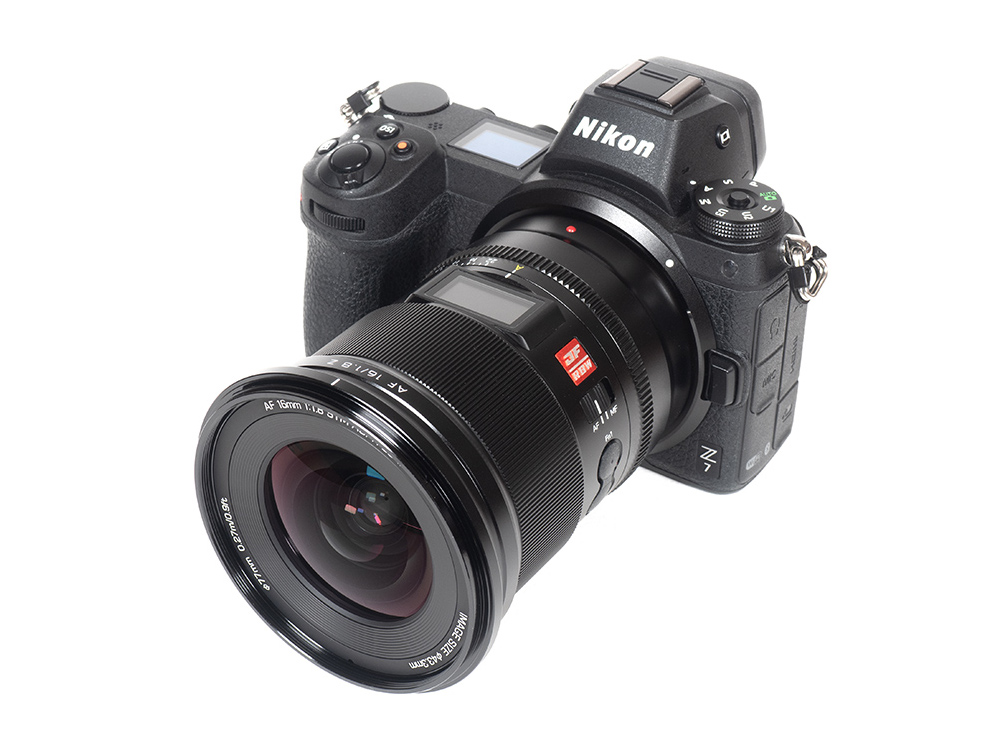Introduction
We reviewed the Viltrox AF 16mm f/1.8 in Sony E-mount about a year ago, and the results were more than just impressive for this kind of lens. Viltrox has now released this lens in Nikon Z mount as well. There won’t be any fundamental differences, but let’s see how the lens performs on Nikon’s 45-megapixel sensor. The 16mm f/1.8 Z is a full-format ultra-wide lens for those who haven’t read the Sony review already. It retails for about $550 USD, which is quite a steal, given the speed of the lens.

The mechanical implementation is pretty much identical to the Sony version, of course. While not a designated “PRO” lens in Viltrox speak, it’s very good indeed. The lens barrel is made of metal, including the mount and the smoothly turning focus ring. Even the back part of the supplied petal-shaped lens hood has a metal ring instead of being all plastic. The length remains constant throughout the focus range. On top of that, it also features dust-proof sealings – 6 of them, to be precise. They also implemented a dedicated aperture ring, which can be set to click or clickless mode. Moreover, there are 2 custom buttons (Fn1, Fn2) that can be configured. Another interesting feature is the LCD display. It shows some more information, including distance, focus distance limiter settings and the current aperture. At least our sample didn’t show the correct focus distance – hopefully, this will be fixed via a firmware update (via the USB port at the mount). Unlike some of its distant cousins, the Viltrox AF 16mm f/1.8 Z doesn’t have a bulb-like front element, and it accepts 77mm front filters.
The Viltrox lens uses a stepping motor for auto-focusing. It’s not the latest and greatest, but perfectly fine for ultra-wide lenses, which aren’t typically used for close-focus action photography. Manual focusing works “by-wire”. EXIF data is provided so it can take advantage of IBIS.
| Specifications | |
|---|---|
| Optical construction | 15 elements in 12 groups, incl. 4xED and 3 aspherical elements |
| Number of aperture blades | 9 |
| min. focus distance | 0.27m (max. 1:10 magnification) |
| Dimensions | φ85.2x103mm |
| Weight | 550g |
| Filter size | 77mm |
| Hood | petal-shaped (bayonet mount, supplied) |
| Available Mounts | Nikon Z, Sony E |
| Other features | LCD display, 2 custom buttons, clickless aperture mode, dust-sealing, aperture ring, USB port for firmware updates |
Distortions
Unlike many other ultra-wide lenses for mirrorless cameras, the Viltrox lens is fully corrected with respect to image distortion. A barrel distortion of merely 0.3% (!) isn’t really noticeable. Viltrox didn’t implement a correction profile but it’s obviously not needed anyway.

Vignetting
The vignetting characteristic is more in line with other lenses in its class. At max aperture, without auto-correction and using Nikon’s “neutral” JPG image settings, the light falloff is very visible at 3 EVs (f-stops). Stopping down to f/4 improves this by 50%. Activated auto-correction cuts off 1.2 EV at f/1.8, and the vignetting is mostly tamed from f/2.8 onward.

MTF (resolution) at 45 megapixels
The highlight of this lens is certainly image sharpness. Of course, it can’t compete with tele prime lenses in this respect, but the results are more than just good for a fast ultra-wide lens. The center quality is superb, straight from f/1.8. The near-center performance is just slightly worse but still easily very good (the Sony sample was even better here). Unsurprisingly, the outer image field is softer, but the border quality is still pretty good, and the corners are at least acceptable at f/1.8. Stopping down gradually increases the quality in the outer image field until it peaks between f/4 and f/5.6. The border quality reaches very good results here; even the corners just make it across this mark. Diffraction sets in at f/8 with a higher impact from f/11.
The centering quality of the tested sample was Ok. Field curvature is low.
Please note that the MTF results are not directly comparable across the different systems!
Below is a simplified summary of the formal findings. The chart shows line widths per picture height (LW/PH) which can be taken as a measure of sharpness. If you want to know more about the MTF50 figures, you may check out the corresponding Imatest Explanations.

Chromatic Aberrations (CAs)
Lateral CAs are well-controlled with an average CA pixel width of ~0.5px at the image borders at f/1.8. This increases slightly when stopping down without reaching relevant levels.

Bokeh
Ultra-wide lenses aren’t crowd-pleasers regarding their bokeh quality – the use of aspherical elements already makes this a difficult task – and the depth-of-field is usually way too big to make a big difference. However, the Viltrox lens does a reasonably good job for a lens in this class. As you can see below, there’s some strong outlining visible at f/1.8 combined with mild onion rings in the inner zone. Stopping down to f/2.8 results in more edgy discs, and the imperfections within the inner discs are getting more pronounced. Still – we’ve seen a lot worse.

When looking at the highlight discs across the image field, they don’t show deterioration towards the corners, which is quite rare.
Note: The strange shadows are a side effect of the shape of the LEDs used for this test.

Here are some bokeh-centric crops from images we took with the Sony version of the lens.

Flare
As you can see below, the Viltrox lens does a pretty good job in contra-light scenes. There are some visible glare effects around the sun, but related reflections on the opposing side of the images are negligible.
Note: You wouldn’t normally take such a shot—and it’s heavily post-processed to brighten the foreground—this image is just for illustrating the degree of flare.

Sun Stars (Experimental)
Below is s sequence of 100% cropped images from 16mm f/1.8 all the way up to f/16 – illustrating the sun star behavior. Sun stars are an aperture effect that shows up if a bright light source is part of the scene (usually in night shots). Below are some crops of a strong light source taken across the relevant aperture range. Due to the circular aperture shape, the sun stars are non-existent at f/1.8 and f/2.8. They start to emerge at f/4 are getting more pronounced at f/4, with the best results achieved between f/8 and f/16.

Sample Images
If you want to download full-size images, click on the “view” link in the image preview or access the gallery directly by clicking on the lens name link below.
The Viltrox AF 16mm f/1.8 Z continues to impress in Nikon Z mount as well. The tested sample showed excellent center performance even at f/1.8. The outer image field isn't quite as sharp but it's already usable at f/1.8 and good to very good at medium aperture settings. Image distortions are negligible even in RAW images. Auto-correction is advisable for vignetting which is very high at maximum aperture - but that's typical for ultra-wide lens. Lateral CAs are low. Ultra-wide lenses are never perfect regarding their bokeh, but it is better than most in its class here.
The build quality of the Viltrox AF 16mm f/1.8 Z is top-notch, thanks to a dust-proof, all-metal construction with internal focusing. Viltrox was still able to keep the weight at manageable 550g. A dedicated aperture ring with a click-less mode option, custom buttons and dedicated AF/MF are also present. The lens even features an on-board LCD showing some of the relevant settings (although the distance indicator wasn't accurate). The STM AF is decently fast and noiseless. There's also no relevant focus breathing.
At the time of this review, Nikon doesn't offer any comparable prime lens, so if you need something this wide and this fast, there's no way around the 16mm f/1.8 Z. However, even when ignoring the paper specs, it's simply a very good lens at a great price.
-
Optical Quality
-
Build Quality
-
Price / Performance


